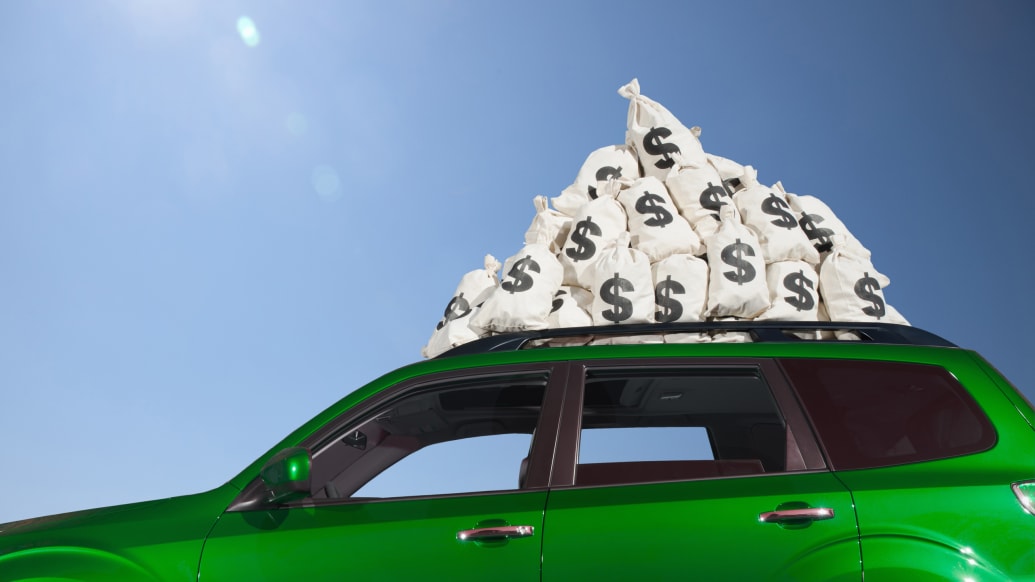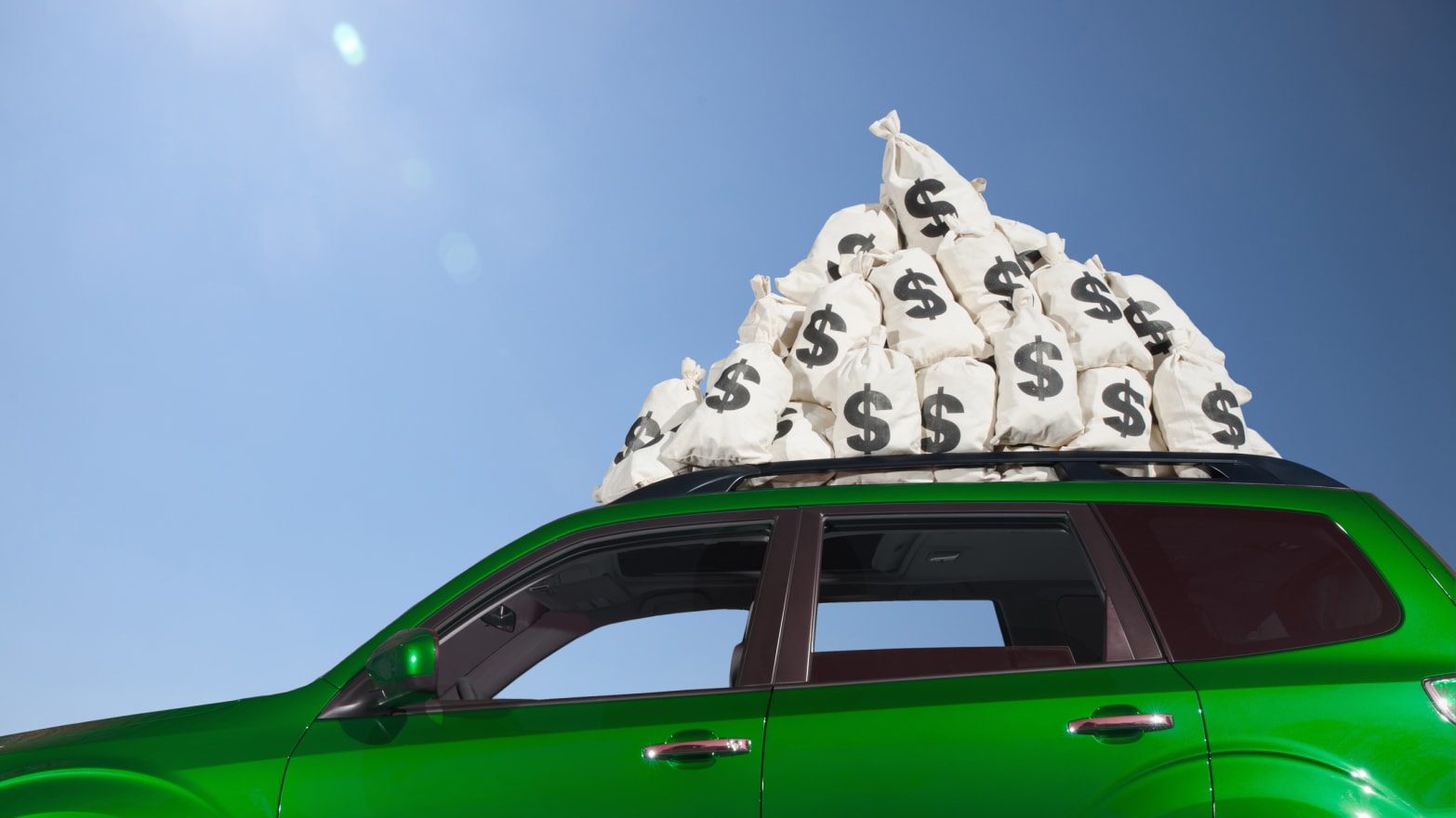Sometimes academic studies are good at officially validating what people already know intuitively. For Americans who wait through lengthy public transportation commutes, it’s common sense that owning a car would offer advantages. Now two recent studies show that cars offer more than just convenience: they can give lower income Americans an economic leg up.

A 2011 Brookings Institute study (PDF) found that in the 100 largest U.S. metro areas, only 22% of low- and middle-skill jobs were accessible by public transit in under 90 minutes, suggesting that today’s working-class riders cannot access needed opportunities. And a new study (PDF) released in March 2014 by the Urban Institute found that public transit access had little effect on economic outcomes. While tracking households that had participated in two federal housing voucher programs, it found that car owners were twice as likely as transit users to find jobs and four times likelier to retain them. Car-owning households were also able to locate near better neighborhoods and schools. This reaffirmed previous work by the Progressive Policy Institute arguing that car ownership plants the seeds for upward mobility.
Of course, these ideas can be challenging to urban planners, who cling to the default assumption that cities must improve mass transit to reduce poverty. If existing services remain inadequate, then planners use it as an argument for more funding. But what if some of the money went instead towards increasing automobile access? Would that not better help economic conditions for the poor?
The idea was considered recently by one of the Urban Institute study’s authors, Rolf Pendall. He claimed that any serious conversation about poverty must include the issue of automobile access. This, he explained, would require planners, who have long opposed car use for environmental and quality-of-life reasons, to reexamine their convictions.
“In the academic research, the dominant ideas have been about improving and investing in transit,” he told the Washington Post. “But I think we have to be able to talk about cars, too.”
Because of the stigma attached to cars—gas guzzling polluters and relics of the past—there has been little serious discussion about making them more available to the poor, save some ideas that have resurfaced in these studies and others like them. One idea would be for cities to bolster—or at least allow—professional car-pooling networks like Lyft and Sidecar, which let people heading in the same direction connect electronically. Another could be encouraging short-term rental programs like Zipcar and Car2Go, which enable solo driving under a time-based or per-mile fee. The Urban Institute study (PDF) suggested that if these services remain too expensive, similar ones could be tried by non-profits.
Another idea might be subsidizing actual car ownership, something raised as a thought experiment last decade by transportation consultant Wendell Cox. He argued that providing cars to every American transit user would cost $10 billion, compared to the $25 billion spent annually on transit subsidies, and would increase people’s mobility. Cox didn’t go so far as to suggest actually giving away cars, but a minor subsidy program could mirror the voucher-based model of other government services. This would enable poor people to shop the private car market, rather than being consigned to government transit, and would be cheaper, he argued, even when accounting for road expansions needed for the extra traffic.
Of course, increasing car use wouldn’t be feasible in some places. If New York City, San Francisco, or one of America’s few other dense cities started encouraging everyone to drive, they’d be wracked with even worse gridlock than they have now. But most cities—especially ones with populations below 100,000—don’t have nearly these traffic levels. Their transportation problems are defined less by over-driving, than by the fact that they even attempt to sustain comprehensive public transit.
My hometown of Charlottesville, VA, is a great example. The 43,000-person, 10-square-mile city currently operates a $6 million bus system. Its daily ridership averages under 7,000, and runs along 10 routes. Like elsewhere, the system includes full-size buses, salaried drivers, a fancy central terminal, and a morning-through-night schedule. Also like other systems, it serves a city where most housing is suburban in style, and where increasing density is discouraged politically.
Together, these factors make it wildly inefficient. Two lines that connect downtown with the University of Virginia campus account for nearly 2/3rds of trips, and are often packed. But other buses consistently have just a handful of people, if they’re not empty altogether. As a result, users are limited in where they can go, and at which times. This lack of critical mass explains not just the minimalist system’s nearly $5 million annual deficit, but why little support for expansion exists.
“You've got to plan ahead,” said Matthew Pullen, a construction worker who I caught leaving a bus outside Charlottesville’s central terminal. Pullen worked downtown and lived about 3 miles away, just beyond city borders. This meant he was forced to make transfers while going to and from work.
“I take like three, three-and-a-half hours out of the day just to commute back-and-forth,” he said.
Other patrons I spoke to reported similarly lengthy commutes, as the price for making transfers between buses that often came once an hour.
“If there’s a certain place I gotta be at, and you say ‘ain’t no hurry,’ then I’ll take the bus,” said another man. “But if you say, ‘you gotta be there at a certain time,’ I’ll just walk.”
The experiences of Charlottesville’s riders mirror those found elsewhere, something I can attest to having ridden dozens of systems while traveling cross-country. These systems’ inability to be cost-effective or prompt boils down to the fact that they are being operated in sprawling, non-intensive areas. It doesn’t help that many are run by public monopolies that are held to minimal performance standards.
This is not to say that transit should be abolished, or go unimproved, especially not in urbanizing areas. But in smaller ones like Charlottesville, the more pragmatic solution to transportation problems may be some combination of maintaining service along intensive routes, and experimenting with car programs, including ones tailored for those who can’t drive. The upshot of improving transportation access in this sort of model could be an increase in job access that gives more opportunity to lower income Americans.
The loaning model has already caught on in Portland, San Francisco, and other cities that are friendly to the “sharing economy.” Perhaps smaller cities with similar political climates could be the ones to try vouchers.
At very least, the idea of greater car ownership should not be reflexively dismissed, nor transit religiously supported, by planners. One goal of any cities’ transportation policy is to increase mobility for the most vulnerable. This requires being open to what will actually accomplish this—even if it strays from existing dogma.
